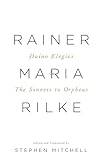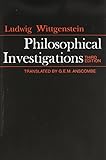“If an ox begins to sicken,” Cato the Elder writes in his treatise on Roman farm management, “give him without delay a raw hen’s egg and make him swallow it whole. The next day make him drink from a wooden bowl a measure of wine in which has been scraped the head of an onion. Both the ox and his attendant should do these things fasting and standing upright.”
This passage has stuck with me, for reasons I don’t entirely understand, since the time I first read it, whenever that may have been. I’m less interested in the questionable medicine it prescribes than in the image of the ox and his attendant — who, on the farm described by Cato, was most likely a slave — together: the attendant going about his work, the ox patiently enduring his ministrations. The two at once familiar and yet gazing across an unfathomable distance of incomprehension as they stand facing one another, both unfed save the ox’s hen’s egg and measure of wine.
 I’ve been thinking of the passage often lately, as my novel, That’s Not a Feeling, is, to my surprise, filled with animals. The novel is set on the rural campus of a boarding school, so it isn’t entirely unexpected that animals should appear. But a brief catalogue of non-human animals seen and discussed in its pages would include deer, bees, ducks, a turkey, cats, a caterpillar, a goat, a pig, some chickens, an owl, two wasps, a peahen, horses, bats, some birds that are not further identified, and a snake. This seems to me, if not quite excessive, then at least curious. It’s the kind of thing I try not to think much about while I’m writing, but now that the book is in its final form, I don’t really see what harm it can do.
I’ve been thinking of the passage often lately, as my novel, That’s Not a Feeling, is, to my surprise, filled with animals. The novel is set on the rural campus of a boarding school, so it isn’t entirely unexpected that animals should appear. But a brief catalogue of non-human animals seen and discussed in its pages would include deer, bees, ducks, a turkey, cats, a caterpillar, a goat, a pig, some chickens, an owl, two wasps, a peahen, horses, bats, some birds that are not further identified, and a snake. This seems to me, if not quite excessive, then at least curious. It’s the kind of thing I try not to think much about while I’m writing, but now that the book is in its final form, I don’t really see what harm it can do.
 In the eighth of Rilke’s Duino Elegies, the poet contrasts animals’ way of being in the world with that of people. “The creature gazes into openness,” he writes, in A. S. Kline’s translation, “… and when it moves, it moves / in eternity, as streams do.” Humans, however, are always looking inward, “our eyes are / as if they were reversed.” I’m sure that making this type of distinction is not what I was up to. First of all, I find it too romantic, too idealized. And the animals I’ve written about aren’t the free, sure beasts described by Rilke. They are often frightened, in the wrong place, or sick, like the ox in Cato.
In the eighth of Rilke’s Duino Elegies, the poet contrasts animals’ way of being in the world with that of people. “The creature gazes into openness,” he writes, in A. S. Kline’s translation, “… and when it moves, it moves / in eternity, as streams do.” Humans, however, are always looking inward, “our eyes are / as if they were reversed.” I’m sure that making this type of distinction is not what I was up to. First of all, I find it too romantic, too idealized. And the animals I’ve written about aren’t the free, sure beasts described by Rilke. They are often frightened, in the wrong place, or sick, like the ox in Cato.
 In this way, they are mirrors of the human characters in the book, who are also often unsettled, ill at ease, or worse. And these characters’ confusion and anxiety is analogous to the opacity that, it seems to me, exists between people and animals. “If a lion could speak, we could not understand him,” Wittgenstein says. I take this to mean that a lion’s life, his experiences and concerns, are so foreign to us that even if he shared our language, we wouldn’t know what he was talking about. Just before making this point in the Philosophical Investigations, a point I think we can safely assume applies to all animals and not only to lions, Wittgenstein discusses the transparency, or lack thereof, between people. He says, “…one human being can be a complete enigma to another.” And, Freud might have added, a complete enigma to himself or herself as well.
In this way, they are mirrors of the human characters in the book, who are also often unsettled, ill at ease, or worse. And these characters’ confusion and anxiety is analogous to the opacity that, it seems to me, exists between people and animals. “If a lion could speak, we could not understand him,” Wittgenstein says. I take this to mean that a lion’s life, his experiences and concerns, are so foreign to us that even if he shared our language, we wouldn’t know what he was talking about. Just before making this point in the Philosophical Investigations, a point I think we can safely assume applies to all animals and not only to lions, Wittgenstein discusses the transparency, or lack thereof, between people. He says, “…one human being can be a complete enigma to another.” And, Freud might have added, a complete enigma to himself or herself as well.
This begins to feel more like what I may have been after, populating the margins of my book with unsteady animals. They stand (or crawl, or fly) as reminders that proximity doesn’t dispel mystery. Just as Cato’s ox and his attendant can live and work together without claiming to know one another completely, we can live among animals and among people without assuming that we comprehend them. This is less a philistine’s incuriosity about his surroundings than a degree of humility as regards the limits of our understanding. Just as psychoanalysis shows us how we are always telling the truth though we do not know the truth, and can be ourselves — can’t help being ourselves — though we remain strangers to ourselves. And yet we are never so resigned that we stop trying to find out more. I like the way animals in books, what John Berger called “animals of the mind,” can serve as emblems of this. From the meadows and the trees, they gaze out at the human characters, who cannot help but wonder what it is the animals see.



